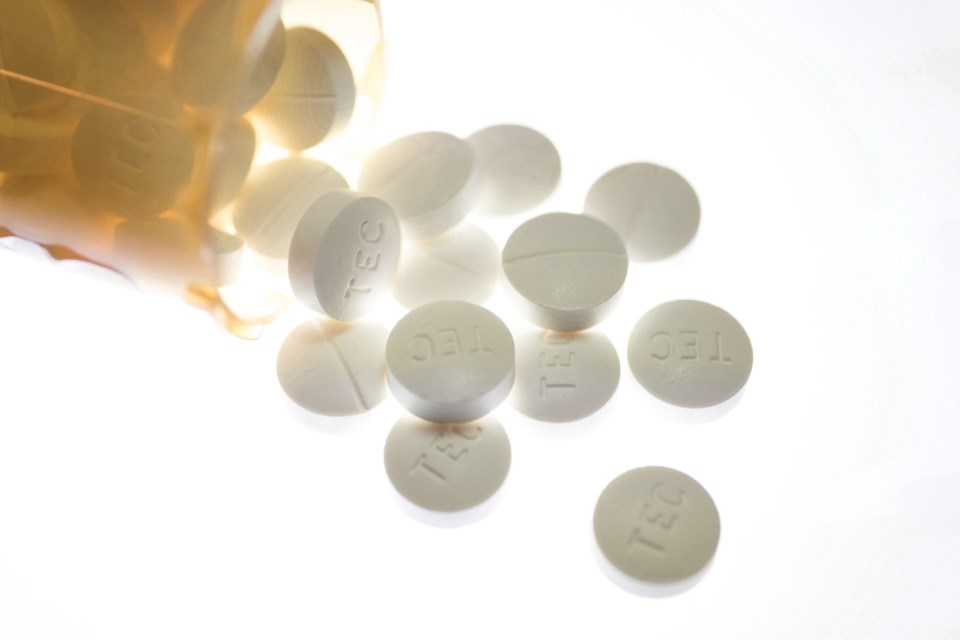When Taylor Young made his way off the Anacortes ferry and into a Sidney pharmacy the other day, he paid $300 for insulin that would have cost $2,400 back home in Norman, Oklahoma. “I walked in and said ‘this is how much I want to buy.’ ” Boom. Done.
It wasn’t as though he travelled here specifically for the insulin. The overnight Canadian excursion was part of a family holiday, one that saw them take in Butchart Gardens and the sights downtown before heading back to the U.S.
But yes, the gap in insulin prices knocked him back. He figured he could fly from Oklahoma to Seattle, cross over to Victoria, book an Airbnb and still be far ahead financially. “I’d probably be saving around $1,000, if not more,” he said.
Then he paused: “It’s amazing and disgusting.”
Young, who needs daily insulin injections for his type one diabetes, is discovering what some of our neighbours across Juan de Fuca Strait have known for years: The money they save by buying certain medications in Canada can offset, or even cover, the cost of a Victoria vacation. Call it pharmaceutical tourism. Or call it a lifesaver for uninsured Americans drowning in their country’s high prescription drug prices.
Young is, in fact, one of the lucky ones. Since he’s only 24, his insulin is covered — for now — by his mother’s insurance. But having been left in the lurch by that insurer once before, he wanted the three-month supply he bought in Sidney as a back-up and to pass on to diabetic friends unable to afford it in the U.S.
Many are in that boat, which is why they take the ferry here.
Since the visitors haven’t appeared to put much of a dent in Canada’s drug supply, and since the Americans bring tourists dollars with them, the practice hasn’t caused much worry on this side of the line — in marked contrast to the reaction July 31 after the White House announced plans to defy the pharmaceutical lobby and allow Americans to legally import lower-cost drugs from the Great White North.
Hold on, we said, it’s one thing for Ma and Pa Pensioner to pick up some cholesterol pills along with the Rogers Chocolates before taking the Coho back to Port Angeles.
It’s another for a U.S. state government or wholesaler to clean out our medicine cabinet.
“Already we consistently see drug shortages for patients in our province,” said Geraldine Vance, the CEO of the B.C. Pharmacy Association.
“B.C. and the rest of Canada cannot manage the drug supply for both Canadians and consumers from a country with 10 times the population as ours.”
It all confirmed the stereotype: Canada has cheap medication while the U.S., which doesn’t regulate prices in the manner of other nations, does not.
Except here’s the thing: our drugs aren’t really that cheap, not when compared to countries other than the U.S. Ottawa says we pay close to 25 per cent more than the median price that people in other developed countries pay for the same drugs. It’s just like gun crime, where Americans are six times as likely to be shot to death as Canadians, but Canadians are more likely to be plugged than residents of most other industrialized nations.
How expensive is it here? Friday, the Angus Reid Institute released a poll showing the cost of prescription drugs prevents many Canadians over the age of 55 from getting the medication they need. One in six say cost has led someone in their household to use drugs other than in the way they are prescribed — cutting pills in half or skipping doses, say, or simply not filling a prescription at all.
That echoed June’s report by the federal government’s Advisory Council on the Implementation of National Pharmacare: “One in five Canadians struggle to pay for their prescription medicines. Three million don’t fill their prescriptions because they can’t afford to.”
The report called for Ottawa to replace Canada’s patchwork of drug plans with a national, universal, single-payer program — though it didn’t get into how we would go about funding it. Note that Canadians spent $34 billion on prescription meds last year, more than they spent on doctors.
On Friday, Ottawa announced changes to the way it regulates patent medicines, changes it says could save $13 billion over 10 years.



